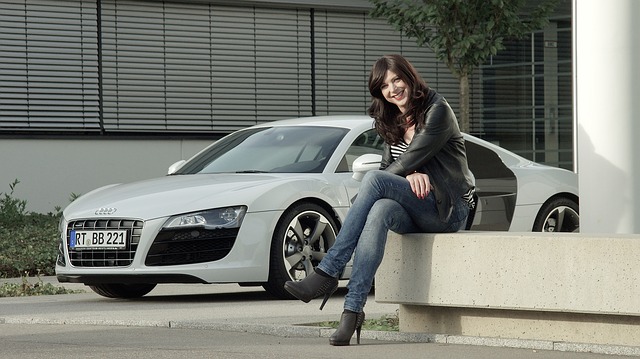Common Mistakes to Avoid
First, you need to understand the difference between clear bras and vinyl stripes, and what these do to the paint. Clear bras will make your car look dirty and streaked, and vinyl stripes will make them appear like they have been waxed too often.
Moreover, shining your car in a circular motion can cause swirls, making it appear unprofessional. Read this website for a quick guide on the whole process. Another mistake to avoid is shining your car in direct sunlight, as this can bake the product into the paint, making the process much harder. Use wax removal pads to remove the product.
Before using liquid wax, you must wash your car thoroughly. Pouring it on your car directly will lead to discoloration and uneven streaks. Instead, pour it on a clean surface, and use the proper applicator pad. If your car is dirty, you should use cleaner wax first, as dirt particles can scratch the top coat of the car.
Once you’ve washed the car, you can wax it. When shining your car, make sure you have enough light to properly check the job. If you don’t have a flashlight, it is easy to miss some spots on the paint.
If they’re still there, repeat the process until the entire car is clean. If you’ve made any mistakes in the process, you should consult with a professional to avoid these errors. Using the wrong type of product can mess everything up, so don’t use degreasers or kitchen soap on your car.
The latter can strip the product and can even damage the clear coat. It is important to use automotive soap, as this is specifically designed for cleaning car paint. It is pH balanced, foams up well, and provides excellent lubrication. If you’re unsure of what type of product to use, you can use a damp sponge.
What is the Best Weather for Shining Your Car?
There are many variables that determine the best weather for shining your car, but one of the most important is the time of year. In general, summer months offer the best weather conditions for shining, as temperatures are mild and there is less rain.
In addition, wax can last four to six months in this period, giving you ample time to re-apply your car before it begins to show signs of wear and tear. The best time to buff your car depends on how much sunlight it gets. Direct sunlight can bake the product onto the surface, making it difficult to remove. In addition, these products tend to cure more quickly in windy conditions.
Therefore, it is best to avoid shining your car in direct sunlight. You can use an electric fan or heater to speed up the drying process. If you must buff your car in the shade, avoid extreme heat. If you want to buff your car, you should do it in the shade or indoors. The sun can overheat the paint, causing it to not adhere well to the surface.

A heated garage is a much better environment, as the temperature inside is more consistent. To maximize shining results, choose a sunny day and use a pad like the Ethos Car Care Foam Wax Pad. Mornings are the best times for shining, as they are cooler than midday. However, the best time for shining depends on the type of car you have.
Another thing to keep in mind is the type of buff you use for the car. Some buffers are more water-soluble, while others are made with a synthetic resin. Choose a suitable buff that is easy to apply to your car. Avoid using buffs that contain petroleum products, such as something like a petroleum-based car buff. You can also choose to use car buff that is specifically formulated for shining.
Avoiding Getting Wax on Non-Painted Moldings and Trim
If you want to protect your car from the effects of the sun’s rays, it’s best to avoid getting buff on any of the non-painted plastic moldings or trim around your vehicle. Not only will the buff cause the paint to discolor, but it will also become difficult to remove once it has cured.
To solve this problem, there are several easy-to-use solutions. If you want to avoid applying buff to non-painted plastic moldings or trim around your vehicle, there are several steps you should take and you should take caution with each and every one.
First, you should carefully wipe off the trim before applying the product. Otherwise, it will collect foreign particles and make the process more difficult. If the product gets on the trim, you can also use a paint remover. It is slightly abrasive, so it may damage the paint or remove the product sealant.
The next step is to clean all the non-painted plastic moldings or trim around your car. A good cleaning solution for rubber moldings and door moldings is using a cleaning and maintaining gel which you apply the product in thin, even layers to avoid the possibility of dripping. Use an auto detailing brush to clean the bottom edges and do it after shining your car since it is best to apply a vinyl and rubber protectant every month or so in order to keep up appearances.
Wax isn’t exactly impossible to clean out of your car’s interior, but it’s extremely difficult. Try to be as careful as possible and even tape-off parts of your car you don’t want damaged. You can use masking tape, painter’s tape, or even duct tape if you’re out of options. While you’re cleaning the paint on your car, don’t forget to use special products on plastic surfaces.
Some products contain polishing agents that can scratch non-painted plastic. If you can’t paint plastic parts, you can use a paint restorer or tire dressing instead. These solutions are effective at cleaning non-painted plastic surfaces. However, the best solution is to solve the source of the problem first and remove any remaining wax.







